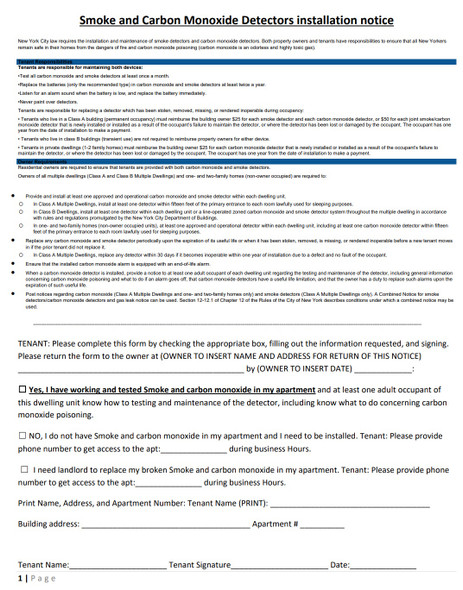hpdsigns.nyc
smoke alarm and heat detectors in residential structure ( pdf format)
- SKU:
- smoke alarm and heat detectors in residential structure
- MPN:
- e Certification hpd step by step ( pdf format)
Description
smoke alarm and heat detectors in residential structure
Smoke Alarms and Heat Detectors in Residential Structures This issue of the Code Outreach Program will give a brief overview of the requirements for smoke alarms, heat detectors, and smoke alarm interconnection in new and existing structures regulated by the 2020 Residential Code of New York State (RCNYS). Section 202 of the 2020 Fire Code of New York State (FCNYS) defines smoke alarms as “a single- or multiple-station alarm responsive to smoke.” Smoke alarms are devices which typically include both a smoke detector and an audible (and/or visible) alarm in one unit. Requirements for carbon monoxide detectors are not addressed in this issue. In many existing residential structures, existing smoke alarms are not interconnected, meaning the activation of any individual alarm does not activate other alarms within the structure. However, Section R314.4 of the 2020 RCNYS requires smoke alarms to be interconnected in all new construction that includes dwelling units, and Appendix J of the 2020 RCNYS requires interconnection between smoke alarms in some existing buildings undergoing modifications. All section numbers included below reference the
2020 RCNYS unless otherwise noted.
Required Locations
Per Section R314.3, smoke alarms are required:
• “In each sleeping room.”
• “Outside each separate sleeping area in the immediate vicinity of the bedrooms.”
• “On each additional story of the dwelling, including basements and habitable attics and not including crawl spaces and
uninhabitable attics.”
Smoke alarms shall be installed as follows (all distances shall be measured horizontally), unless these constraints would prevent the
installation of an alarm in any of the required locations listed above:
• Smoke alarms - not less than 3 feet from the door or opening of a bathroom that contains a bathtub or shower.
• Ionization smoke alarms - not less than 20 feet from a permanently installed cooking appliance.
• Ionization smoke alarms with an alarm-silencing switch - not less than 10 feet from a permanently installed cooking appliance.
• Photoelectric smoke alarms - not less than 6 feet from a permanently installed cooking appliance.
Per Sections R314.2.3 and R314.4.1, heat detectors “shall be installed in new garages that are attached to or located within new and existing
dwellings” and “shall be connected to an alarm or smoke alarm that is installed in the dwelling unit.” Heat detectors are not required in
existing garages, except where such existing garages are required by the Uniform Code to meet the requirements for new construction
DISCLAIMER These codes and forms may not be the most recent version. The State / federal or other regulation department may have more current or accurate information. We make no warranties or guarantees about the accuracy, completeness, or adequacy of the information contained on this site or the information linked to on the state site. Please check official sources.
The requirements for sign / forms content are determined by intended use and by applicable regulation. The BUYER is responsible for determining the appropriate content for a sign or package of signs. WE makes no warranty or representation of suitability of a sign for any specific application. IT IS THE CUSTOMER'S RESPONSIBILITY TO ENSURE THAT THE SIGNS / Forms THE CUSTOMER ORDERS ARE IN COMPLIANCE WITH ALL STATE, FEDERAL, LOCAL, AND MUNICIPAL LAWS. Please review terms and conditions prior to purchase.
For more information about what is required, see the laws that are referenced and the rules applicable to your city and state. This page is for informational purposes only and is not intended as legal advice, professional advice or a statement of law. You may wish to consult with an attorney.









